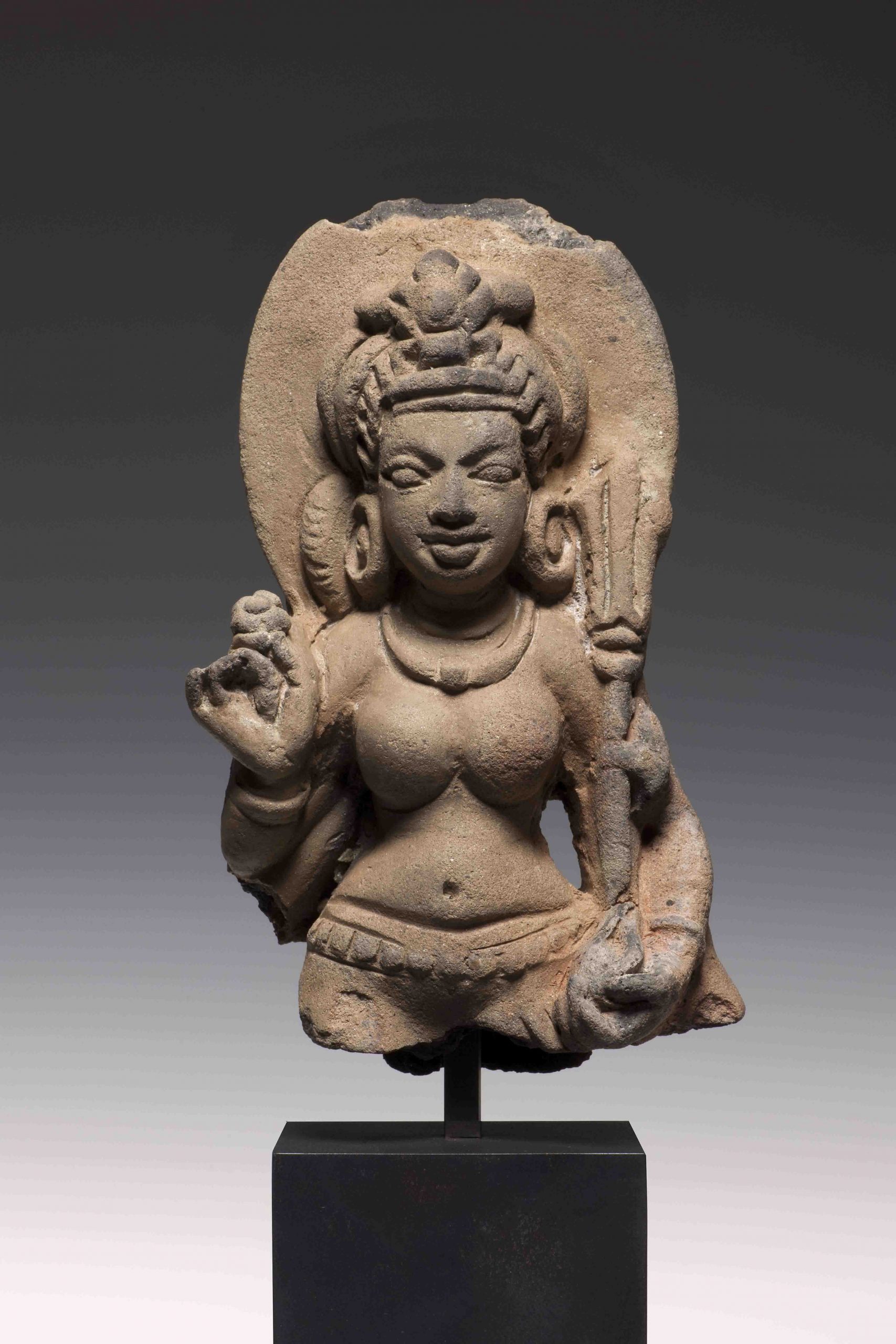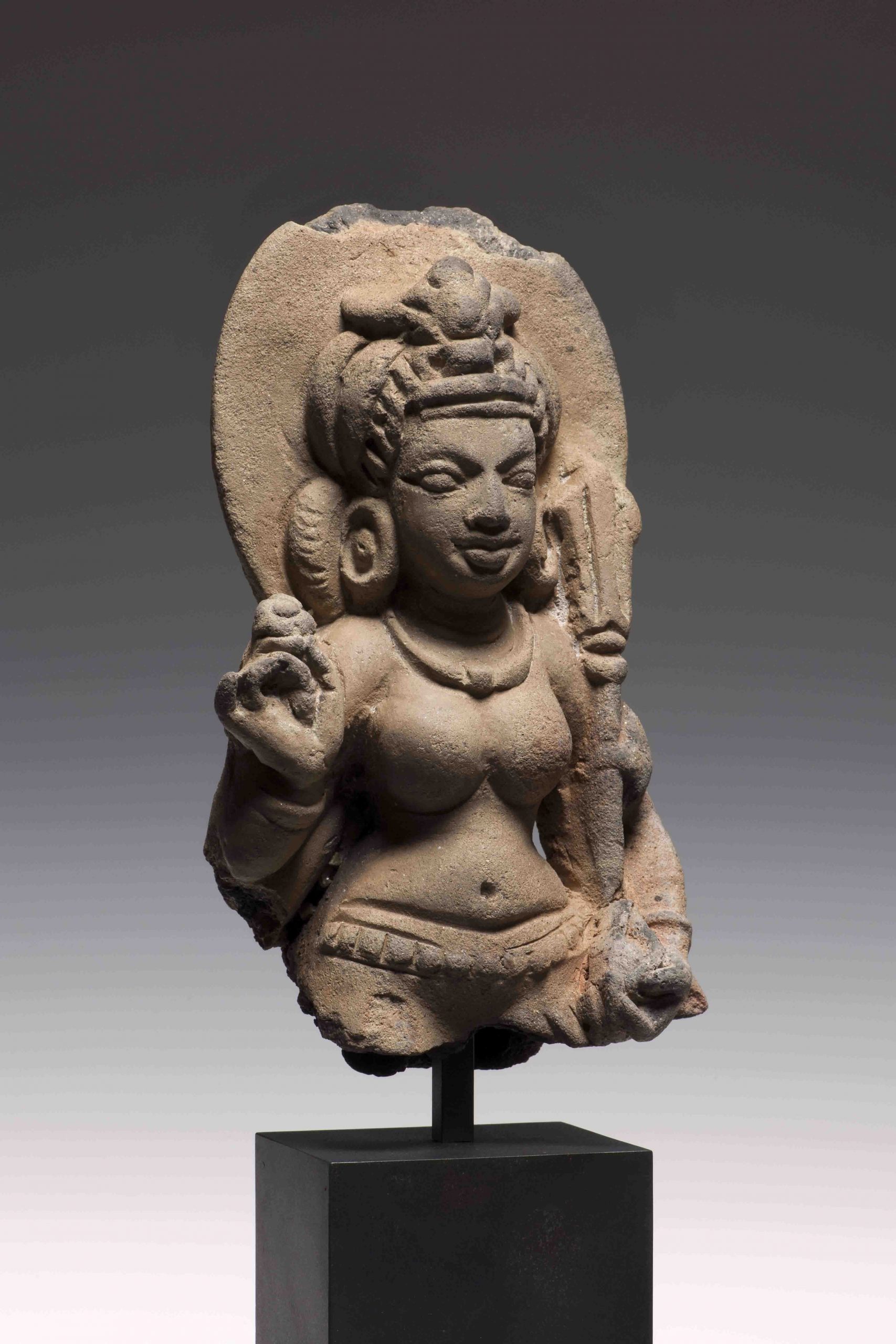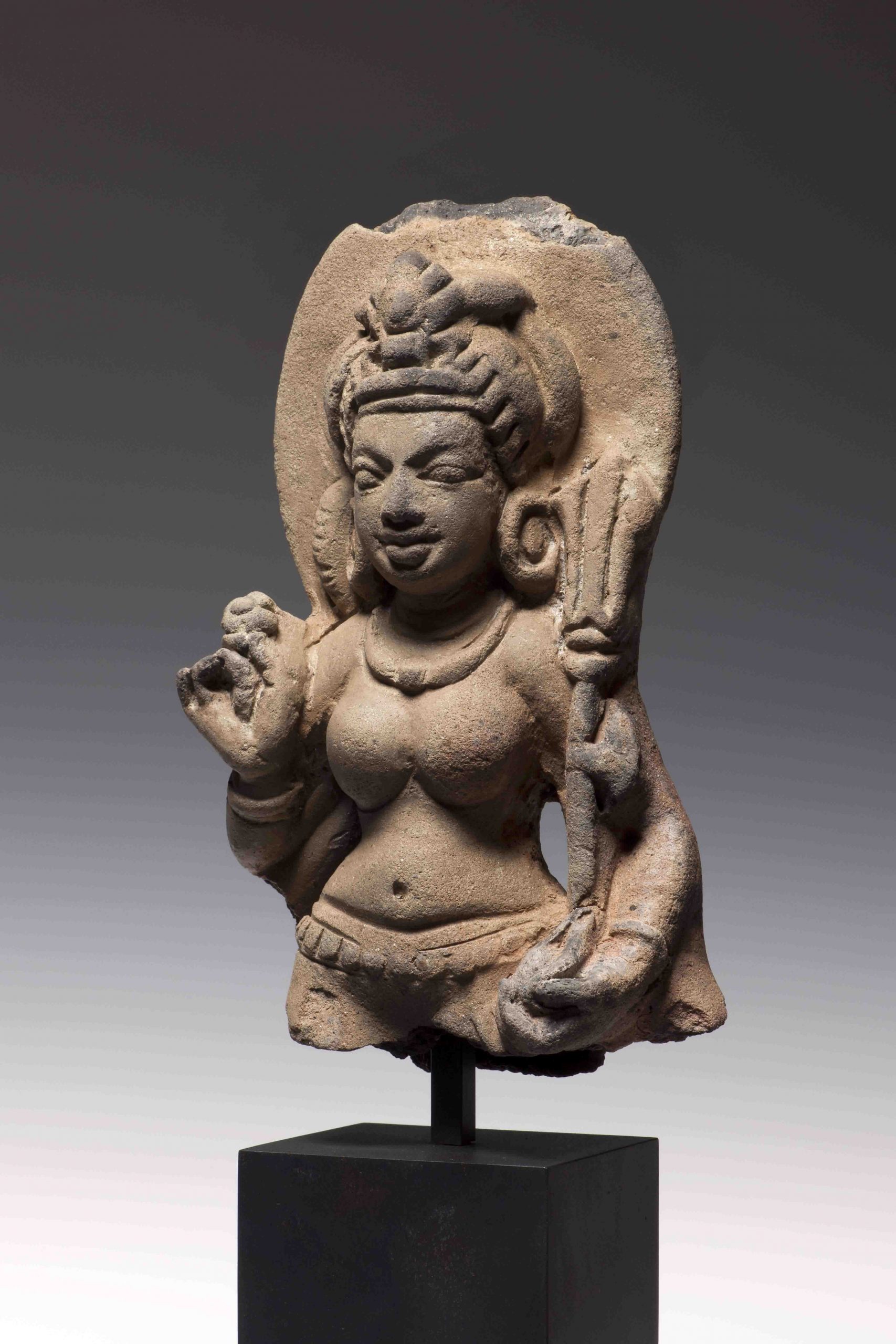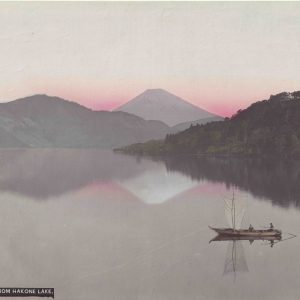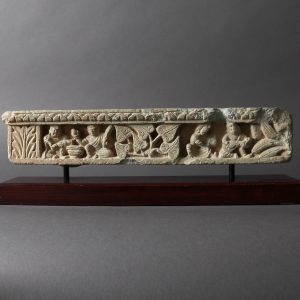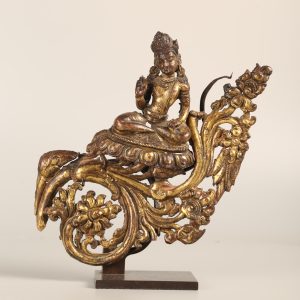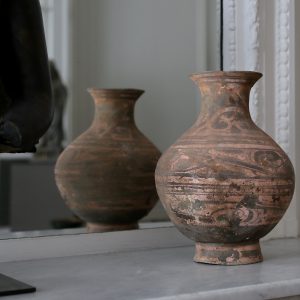Bust of Durgā
Terracotta
Northern India
5th- 6th century, Gupta period
H. 21 cm or 8 ⅜ in
Description
The sensitive model of this bust of a female divinity shows all the sensual beauty and incredible vivacity of the terracotta Gupta artworks. Characteristic of the 5th-6th centuries – the heyday of this “classical India” period – it is 21 cm (or 8 ⅜ in) high.
Admirable for her youthful beauty, the goddess with her voluptuous breasts and thin waist wears a light dhoti, simply held by an elegant pearl belt visible on her hips. With her many arms, she holds a lotus flower in one of her right hands, and to her left can be recognized the trident and probably the shell. These attributes strongly suggest that the divinity is one of the nine forms of the great Hindu goddess Durgā. The three horizontal lines drawing the “beauty folds” on the neck further underline her divine greatness.
The full face, the bright and wide open eyes with arched eyebrows, the small well defined nose and the fleshy lips: all these details show that the execution is full of fluidity and softness. The gaze seems penetrating and lively, while the very stylized hairstyle composed of thick braided strands organized around a central lotiform buffet gives a flamboyant character to the goddess. At the back, the oval and sober halo contributes to the enhancement of the face. The goddess wears a necklace with a central cabochon, wristbands and heavy earrings in the shape of double circular rings. The sobriety of the ornaments is definitely characteristic of Gupta women’s jewellery and typical of the aesthetic conventions of the time.
Provenance: Private collection, Hong Kong, since 1990.

